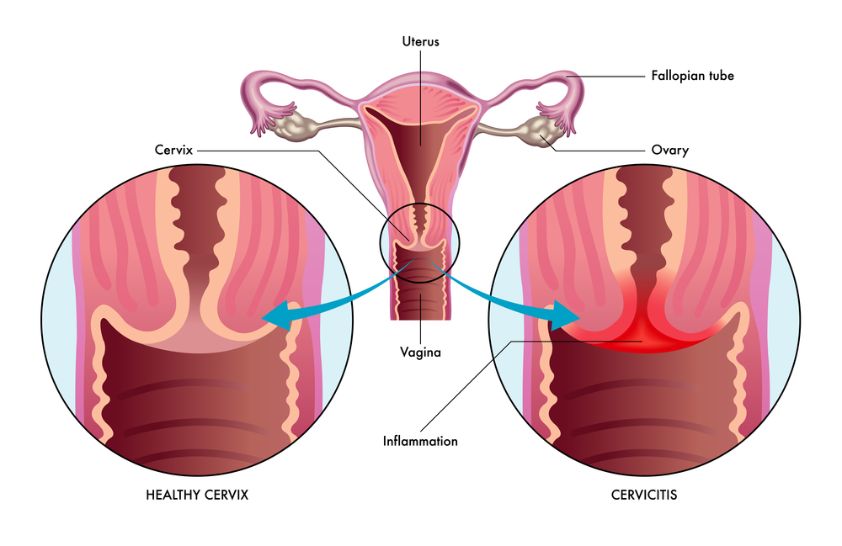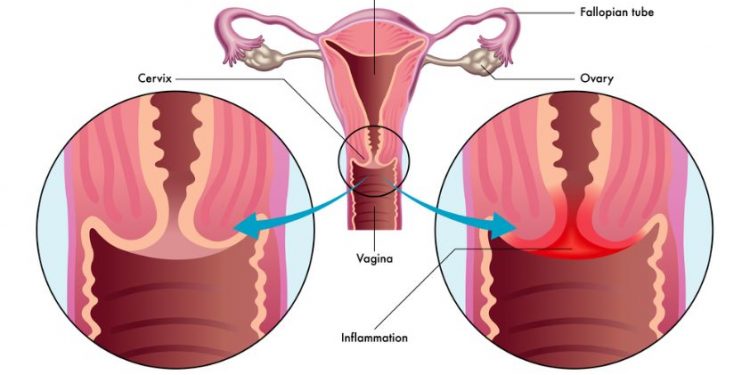Cervicitis symptoms can include a bloody vaginal discharge, pain during sexual intercourse, spotting or bleeding between periods, and irritation of the urethra. Infections that cause cervicitis can spread beyond the cervix to the uterus and fallopian tubes, causing a condition called pelvic inflammatory disease (PID).
The most common causes of cervicitis are sexually transmitted infections, such as gonorrhea or Chlamydia. However, cervicitis can also be caused by irritation from chemicals in douches or forgetting intravaginal foreign bodies, such as tampons. It may also be caused by an allergic reaction to latex or other chemicals used in birth control devices such as diaphragms or cervical caps.
A history of STIs, multiple sexual partners or other high-risk sexual behaviors are risk factors for developing cervicitis. In addition, women with a history of HPV infection or a history of vulvovaginal herpes are at higher risk for cervicitis.
If you have cervicitis, your doctor will evaluate the cause to determine the best treatment. If it is caused by a bacterial or viral infection, antibiotics will be prescribed to treat the infection and reduce your chances of developing recurrent infections.
Your health care provider will review your medical history and conduct a physical examination of your vagina. He or she will look for signs of inflammation involving the cervix, uterus, or ovaries and use a swab to examine your vagina for tenderness. Your doctor may also test for certain bacteria that can cause cervicitis, including Chlamydia and syphilis.

Other tests may be used to diagnose cervicitis, such as a biopsy or ultrasound scan of your cervix. Your doctor may do a test to see if you have genital herpes and a swab to check for cervical cancer or precancer.
You can prevent cervicitis from occurring by using condoms during sex and by limiting the number of people you have sex with. You can also avoid products that are known to irritate your cervix, such as perfumed soaps, scented lotions, and constricting underwear made of synthetic fabrics.
When a woman has cervicitis, she will likely need to take antibiotics for two weeks or more to clear up the infection and get rid of symptoms. She should be sure to finish the entire course of antibiotics, even if the symptoms start to go away before the drugs are finished.
To decrease your chances of recurrence, you and your partner should abstain from sexual intercourse until the antibiotics are complete. You should also have all of your sexual partners tested for a STI before having any sex.
The most important thing you can do to reduce your risks of cervicitis is to follow good personal hygiene practices. Be sure to have the right amount of rest, eat a healthy diet, and exercise regularly. Limit your intake of caffeine, alcohol, tobacco, and junk food.
Having a child with an infected cervix is very dangerous, and can lead to obstetric complications or an infant with an infection that can be passed onto the baby. The infant can develop a life-threatening infection called pneumococcal meningitis, which is sometimes fatal for the baby.









